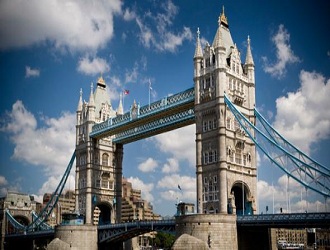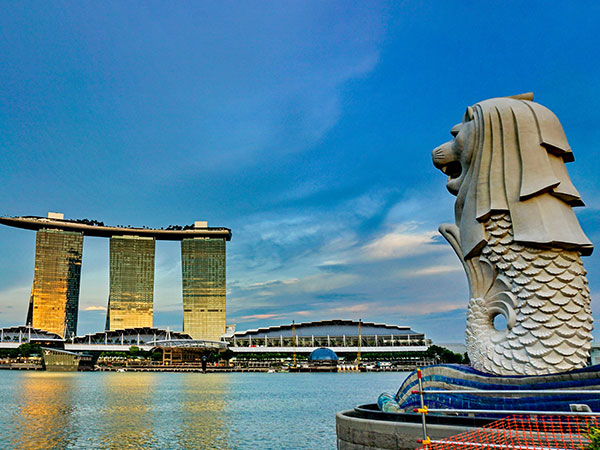



Italy is a country in Southern Europe, shaped like a boot, with a rich history and culture, known for its art, food, fashion, and iconic cities like Rome and Florence. Italy is known for its rich history, culinary treasures, and stunning landscapes. Whether it’s the ancient ruins of Rome, the artistic masterpieces in Florence, or the serene beauty of the Italian lakes, there’s always something remarkable to discover in Italy. Italians most frequently travel to France and Spain, followed by Germany, Austria, and Switzerland.
Italy boasts the 8th largest economy globally and the 3rd largest in the European Union, with key strengths in manufacturing, tourism, and a diversified service sector, but faces challenges like high public debt and structural rigidities. Italy can be a great place to live, offering a high quality of life, rich culture, and beautiful scenery, but it also has its challenges, such as a complex bureaucracy and a slower-paced job market.
In 2020 Italy hosted the second largest population of Indians in Europe with over 200,000 Indians living there.
According to 2016 municipal register data, Italy has the highest number of Indians in continental Europe (151,000). Mass immigration from India to Italy started in the 1990s, but economic and political environments more conducive to the entry and permanent settlement of immigrants have resulted in more rapid growth of the Indian immigrant community in Italy.
Due to the unskilled and irregular nature of Indian immigration and the lack of integration policies for unskilled labour in both countries, the level of integration of Indian immigrants remains unexplored. In this research, we used a qualitative methodology to explore the integration level of Indian immigrants into different spheres of these host societies
We conducted 86 semi-structured interviews with Indian immigrants in seven cities with high concentration of Indian immigrants in both countries over 2016–2017. We found that the level of integration of Indian immigrants into the host societies is fragmented: some segments of the Indian community are integrated into specific spheres of the host societies, while the rest remain excluded
The main reasons for this fragmented integration are the absence of integration policies for unskilled immigrants, Indians’ provisional attitudes towards permanent settlement in these countries, the internal diversity of the Indian immigrant community and frequent international mobility through transnational networks.
Italy, with its rich culture, history, stunning landscapes, and “la dolce vita” lifestyle, offers a compelling draw for those seeking a new home, with many expats citing the slower pace of life, delicious food, and vibrant culture as key reasons for settling there.
To obtain permanent residency in Italy, you must legally reside in the country for at least five consecutive years, have a valid residence permit throughout that time, and meet specific requirements, including demonstrating sufficient income and passing an Italian language test.
| Temporary residence permit types | – seasonal work, – self-employment, – study, – medical treatment, – family reunification, – refugee status, – humanitarian grounds, – elective residence |
| Time needed to obtain the temporary residence permit (approx.) | up to three months |
| Temporary residence permit validity | It depends on the reason of issuance and it varies from min. 6 months to max. 2 years |
| Documents for obtaining temporary residence | – the temporary residence application form, – the passport, – the visa, – recent photographs, – proof of paying a fee of EUR 14.62, – document attesting the purpose of stay |
| Mandatory registrations with state authorities (i.e. with the population/municipality register) | The state authorities vary based on the type of permit needed; they can refer to: – local municipalities, – Patronati offices, – Prefectures, – post office |
| Dependents can join the temporary permit holder | No – not available for first-time applicants (those who renew their residency from Italy can bring their family members in certain situations) |
| Temporary or permanent residency for investment purposes | Yes, for certain categories of visas (investor program) |
| Minimum temporary residence before applying for permanent residence | After 5 years of uninterrupted stay in Italy |
| Documents for obtaining permanent residence | – passport or identity document, – copy of the income statement, – evidence on housing in Italy, – the current residence documents, – proof of payment of fees |
| Naturalization requirements | – permanent residency for 5 years, – overall stay in Italy of 10 years, – tax residency in Italy, – proof of having at least the minimum income established in Italy, – proof of knowing the Italian language, culture and history |
| Citizenship after permanent residence | One can apply for citizenship after 5 years of being a permanent resident. |
To qualify for permanent residency in Italy, you must be a non-EU citizen who has legally and continuously resided in Italy for at least 5 years, with absences not exceeding 6 months consecutively or 10 months total, and demonstrate adequate knowledge of the Italian language and sufficient income.
Italy, residence permits are categorized as temporary or permanent, with temporary permits allowing stays for 1-2 years, while permanent permits grant indefinite stay and work rights.
Types of Residence Permits in Italy:
Temporary Residence Permit (Permesso di Soggiorno):
Permanent Residence Permit (Permesso di Soggiorno per Residenza Permanente):
Work in Italy, you’ll need a work permit and visa, and if your work duration exceeds three months, you must apply for a residence permit within eight days of entering the country. You can find job opportunities through public employment services, private agencies, or freelance platforms.
Requirements
1. Work Permit and Visa: You’ll need a valid work permit and visa to be legally employed in Italy.
2. Residence Permit (if applicable): If your work duration is over three months, you must apply for a residence permit within eight days of entering Italy.
3. Language Proficiency: While not always mandatory, proficiency in Italian is highly advantageous, especially for many job roles.
Finding a Job:
1. Public Employment Service: You can apply to the public employment service (Centri per l’Impiego) and set up an SPID (digital identity).
2. Private Employment Agencies: Consider using private employment agencies, which can assist with job placement.
3. Freelance Platforms: If you’re a freelancer, you can find work on online platforms.
4. Job Boards: Check job sites like Indeed Italy, LinkedIn, and The Local jobs.
5. Networking: Connect with people in your field and reach out to potential employers.
6. Ministry of Labour Portal: The Ministry of Labour’s portal, ‘cliclavoro.gov.it,’ publishes job offers and career information.
Job Sectors and Opportunities:
1. Tourism: Italy’s strong tourism industry offers seasonal jobs in hospitality, restaurants, and hotels.
2. Technology and IT: The IT sector is experiencing growth, with opportunities in AI, cybersecurity, and software development.
3. Other Sectors: Other sectors include retail, business, and various specialized fields.
Here’s a more detailed look at job opportunities for international students in Italy:
1. Law
2. medicine
3. bank managers
4. professors
5. English language teachers are some popular jobs for international students.
6. IT and Technology
7. Healthcare and Education
8. Tourism
9. Business development
10. Engineers
See below for an extensive list of construction-related job titles and occupations. Use this list to help power your job search.
| 1 | Banking, Finance & Insurance: Average annual salary around €38,688. |
| 2 | Engineering: Average annual salary around €38,222. |
| 3 | Oil & Gas: Average annual salary around €38,093. |
| 4 | Healthcare, Pharmacy and Social Services: Average annual salary around €33,138. |
| 5 | Marketing and Sales: Average annual salary around €33,671. |
| 6 | Architecture & Creative Arts: Average annual salary around €34,225. |
| 7 | Beginner Level: Salaries can start around €30,000 to €35,000 annually. |
| 8 | Senior Level: With experience, salaries can increase significantly, potentially reaching €60,000 or more. |
| 9 | An accounting office manager might earn €37,000 as a beginner and €41,000 as a senior, |
| 10 | energy electrical engineer could start at €35,000 and potentially reach €63,000.
|
| General Salary Information | |
| The average annual salary in Italy is around €32,450. | |
| The average monthly salary is around €3,766. | |
The lowest annual salary is about €12,840, while the highest can reach €196,800. | |
| Italy does not have a statutory national minimum wage, but minimum wages are determined through sector-specific collective bargaining agreements (CBAs), with average rates around €7–9 per hour. | |
| Lombardy, known as the financial center of Italy, has the highest gross salaries in the country. | |
| Southern regions tend to have lower wages, potentially due to factors like higher unemployment rates and lower costs of living. |
Citizens from different nations must have a job in Italy before applying for an Italian work visa. They also need a work permit, which the employer must apply using documents from the employee that works in their favor.
Along with the application, the employees will require the supporting documents like:
The permission to work and live in Italy involves a three-part process:
can help – fill in your details and we’ll call you back.



